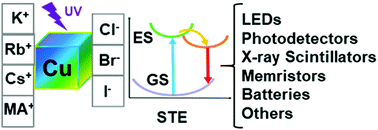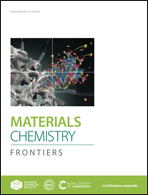Progress in copper metal halides for optoelectronic applications
Abstract
Ternary metal halides, including perovskites, have become a popular field of study over the last decade. Recently many groups have attempted to replace the lead in lead-based perovskites with other metals while retaining similar optical and electronic properties. While there are several candidates for lead replacement, copper-based ternary metal halides have arisen as some of the most interesting “perovskite-inspired” materials. Here we review the recent work on copper-based ternary metal halides, including all-inorganic and organic–inorganic hybrid, perovskite and non-perovskite, and ternary copper halides. We also discuss their photophysics and briefly compare these to copper-based double perovskites and other related compounds. This review mainly discusses the synthesis and properties of these materials as thin films, single crystals, nanomaterials, and microcrystalline powders, with a focus on their use in optoelectronic applications, including LEDs, solar cells, photodetectors, X-ray detectors, batteries, and other devices. Finally, we conclude with a perspective on the current issues facing the field, along with suggestions for future directions for this fascinating class of copper compounds.

- This article is part of the themed collection: 2021 Materials Chemistry Frontiers Review-type Articles


 Please wait while we load your content...
Please wait while we load your content...